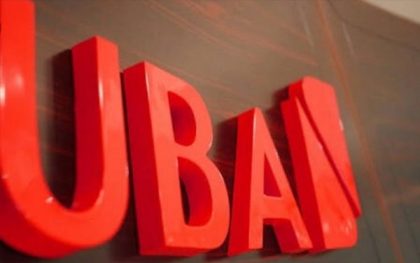Fitch Rating has revised the Outlooks on the Long-Term Issuer Default Ratings (IDRs) of United Bank for Africa (Ghana) Limited to Negative from Stable and affirmed the Long-Term IDRs at ‘B’. A full list of ratings actions is below.
The rating actions follow the revision of the Outlook on Ghana’s Long-Term IDRs to Negative from Stable on 22 June 2021 (see: Fitch Revises Ghana’s Outlook to Negative; Affirms at ‘B’).
The revision of the Outlook on the bank’s IDRs reflects Fitch’s view that a sovereign downgrade would likely result in a downgrade of the issuers’ Long-Term IDRs. The Long-Term IDRs of UBA Ghana are driven by its standalone creditworthiness, as expressed by their Viability Ratings (VR) of ‘b’. Fitch considers it unlikely that the bank would remain solvent in case of a sovereign default due to the concentration of its operations within Ghana, particularly high exposure to the sovereign, primarily through government securities (equivalent to over 200% of Common Equity Tier 1 Capital), and reliance on sovereign-derived income.
Fitch also considers that a sovereign downgrade may have a negative impact on the banks’ asset quality, earnings and capitalisation. Therefore, the banks do not meet Fitch’s criteria to be rated above the Ghanaian sovereign (B/Negative).
The ‘5’ Support Rating of UBA Ghana are unaffected by this rating action.
Factors that could, individually or collectively, lead to negative rating action/downgrade:
- A sovereign downgrade would result in a downgrade of the bank’s Long-Term IDRs and VRs, given that the bank do not meet Fitch’s criteria to be rated above the sovereign.
Stronger-than-expected loan or balance-sheet growth or material deterioration in asset quality that exerts significant downward pressure on capitalisation and leverage may result in a VR downgrade if not compensated by new equity injections. This could be indicated by a sustained decline in the tangible common equity/tangible assets ratio to around 12%.
Factors that could, individually or collectively, lead to positive rating action/upgrade:
- An upgrade would require a sovereign upgrade and an improvement in the operating environment. Fitch does not consider this likely given the Negative Outlook on Ghana’s Long-Term IDRs.
International scale credit ratings of Financial Institutions and Covered Bond issuers have a best-case rating upgrade scenario (defined as the 99th percentile of rating transitions, measured in a positive direction) of three notches over a three-year rating horizon; and a worst-case rating downgrade scenario (defined as the 99th percentile of rating transitions, measured in a negative direction) of four notches over three years. The complete span of best- and worst-case scenario credit ratings for all rating categories ranges from ‘AAA’ to ‘D’. Best- and worst-case scenario credit ratings are based on historical performance. For more information about the methodology used to determine sector-specific best- and worst-case scenario credit ratings, visit https://www.fitchratings.com/site/re/10111579
The principal sources of information used in the analysis are described in the Applicable Criteria.
Unless otherwise disclosed in this section, the highest level of ESG credit relevance is a score of ‘3’. This means ESG issues are credit-neutral or have only a minimal credit impact on the entity, either due to their nature or the way in which they are being managed by the entity. For more information on Fitch’s ESG Relevance Scores, visit www.fitchratings.com/esg
Additional information is available on www.fitchratings.com

Discover more from Freelanews
Subscribe to get the latest posts sent to your email.
 Freelanews …an online news platform without fake news
Freelanews …an online news platform without fake news













